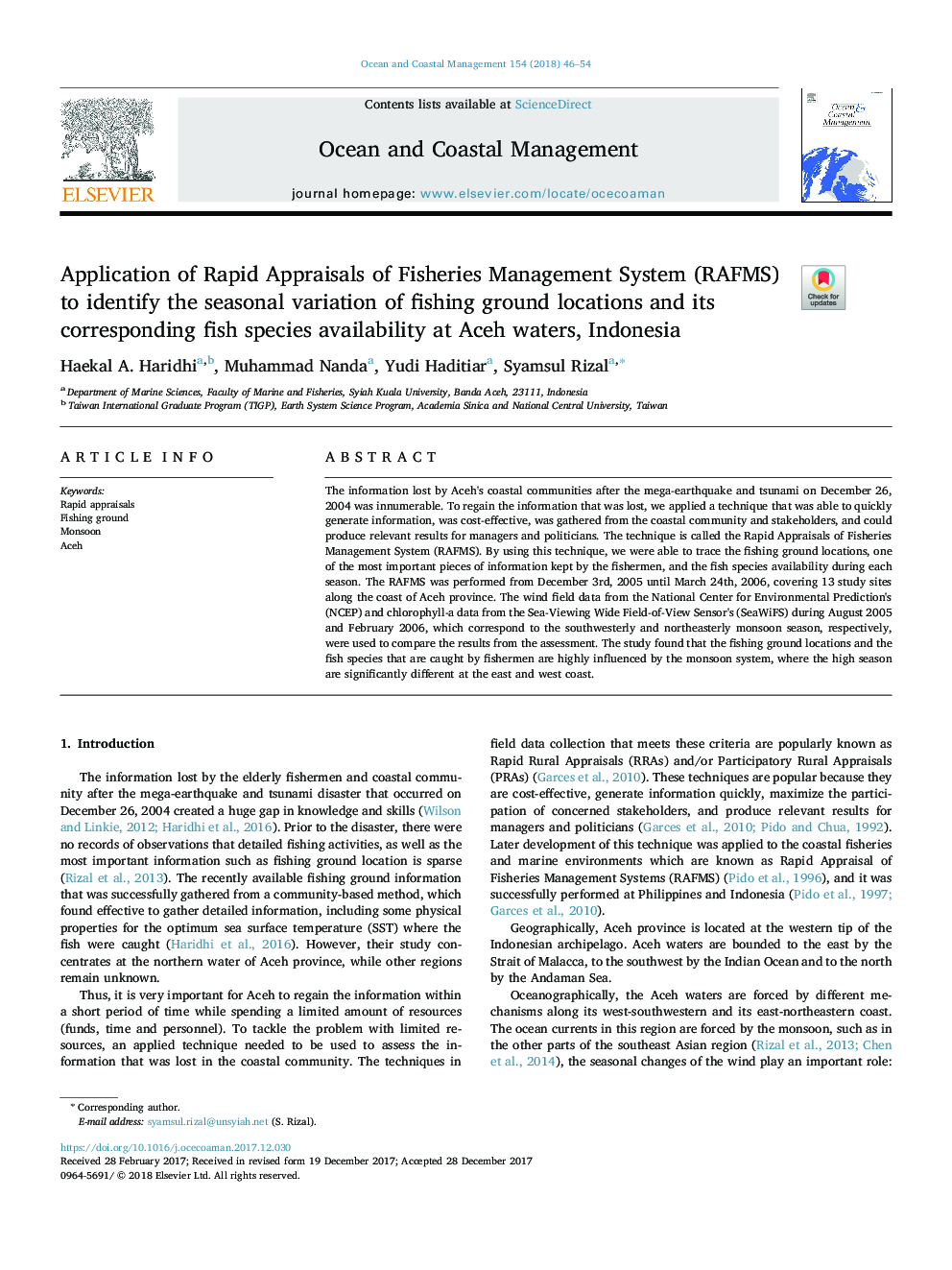| Article ID | Journal | Published Year | Pages | File Type |
|---|---|---|---|---|
| 8060819 | Ocean & Coastal Management | 2018 | 9 Pages |
Abstract
The information lost by Aceh's coastal communities after the mega-earthquake and tsunami on December 26, 2004 was innumerable. To regain the information that was lost, we applied a technique that was able to quickly generate information, was cost-effective, was gathered from the coastal community and stakeholders, and could produce relevant results for managers and politicians. The technique is called the Rapid Appraisals of Fisheries Management System (RAFMS). By using this technique, we were able to trace the fishing ground locations, one of the most important pieces of information kept by the fishermen, and the fish species availability during each season. The RAFMS was performed from December 3rd, 2005 until March 24th, 2006, covering 13 study sites along the coast of Aceh province. The wind field data from the National Center for Environmental Prediction's (NCEP) and chlorophyll-a data from the Sea-Viewing Wide Field-of-View Sensor's (SeaWiFS) during August 2005 and February 2006, which correspond to the southwesterly and northeasterly monsoon season, respectively, were used to compare the results from the assessment. The study found that the fishing ground locations and the fish species that are caught by fishermen are highly influenced by the monsoon system, where the high season are significantly different at the east and west coast.
Keywords
Related Topics
Physical Sciences and Engineering
Earth and Planetary Sciences
Oceanography
Authors
Haekal A. Haridhi, Muhammad Nanda, Yudi Haditiar, Syamsul Rizal,
